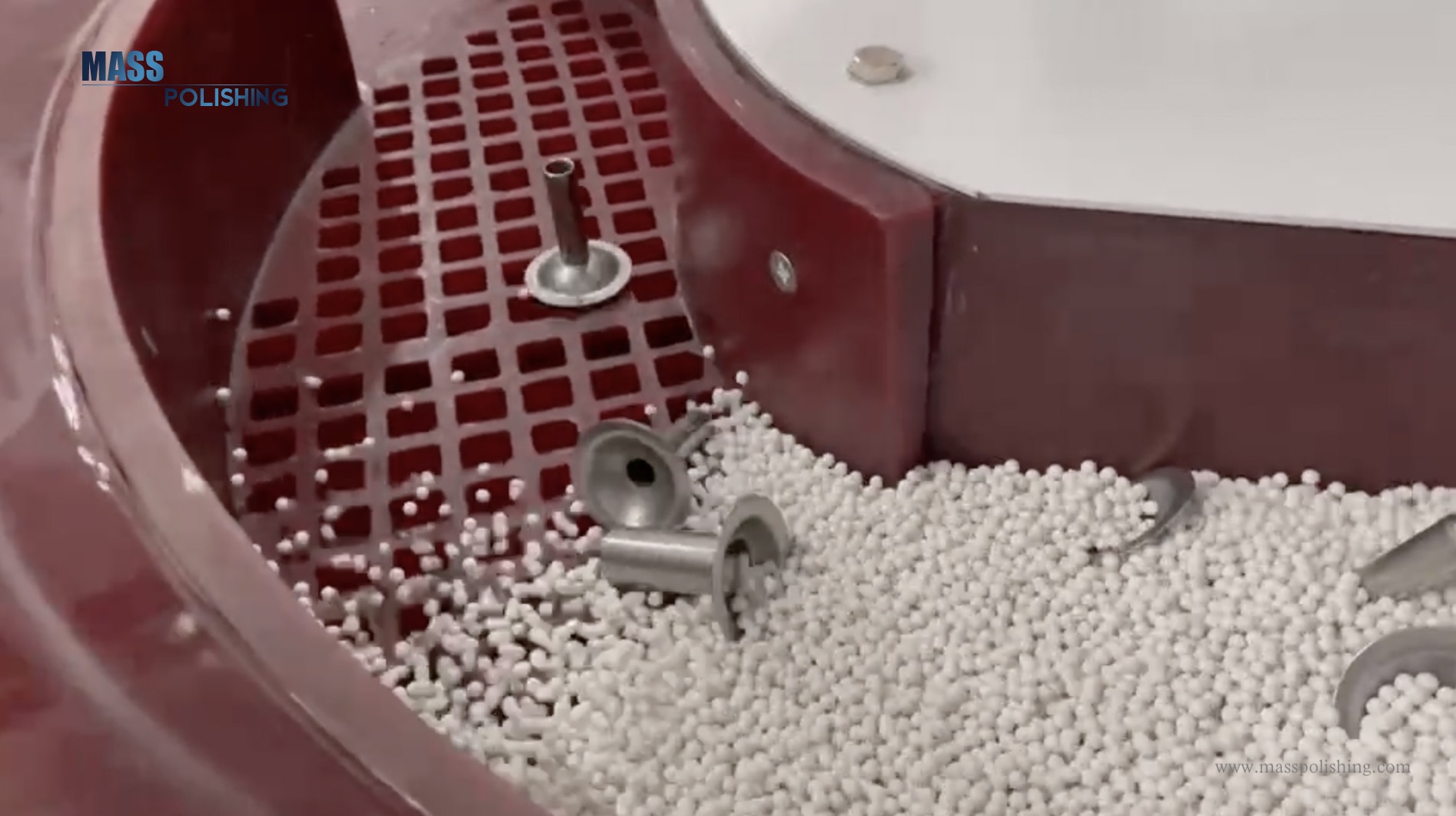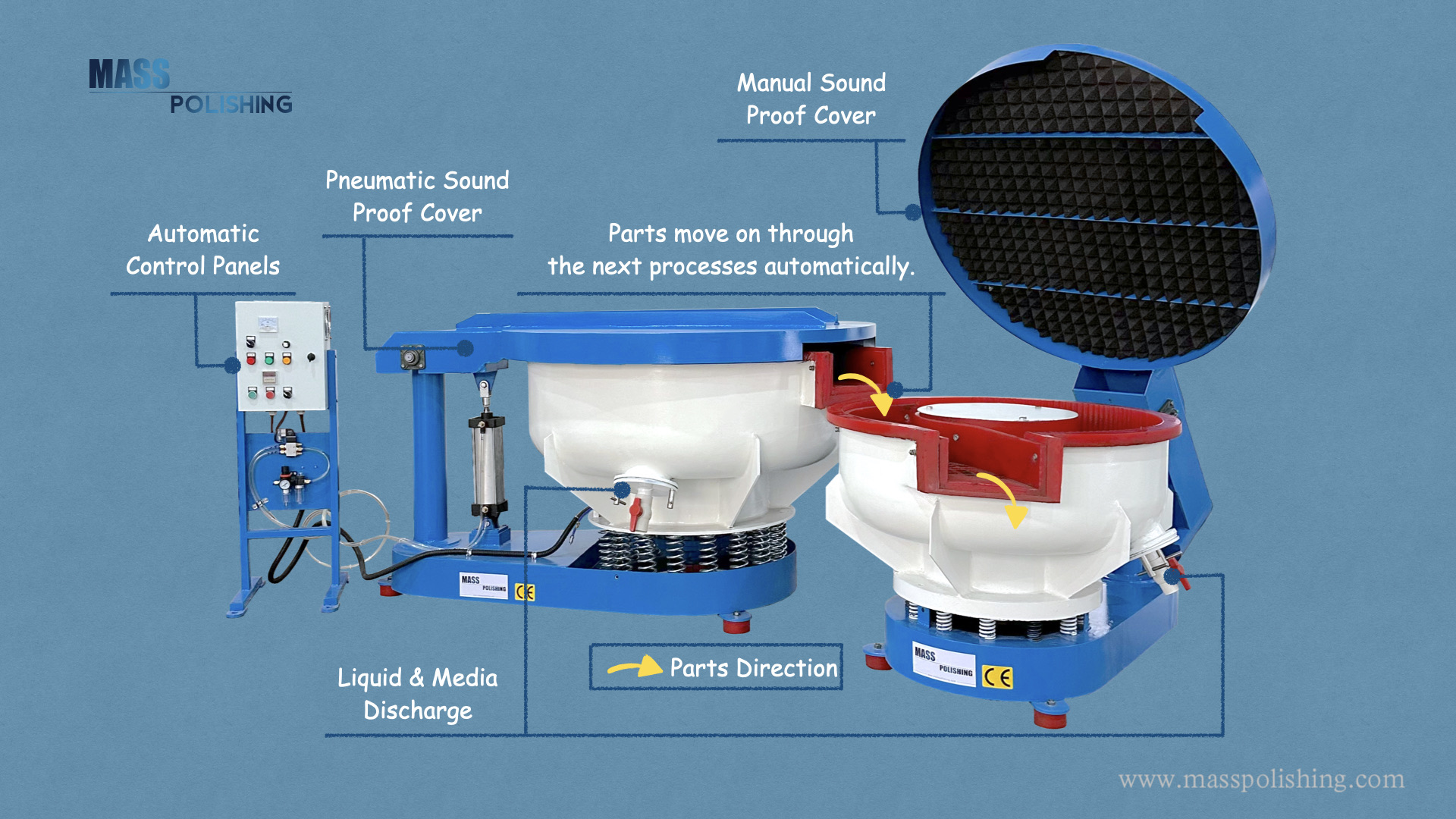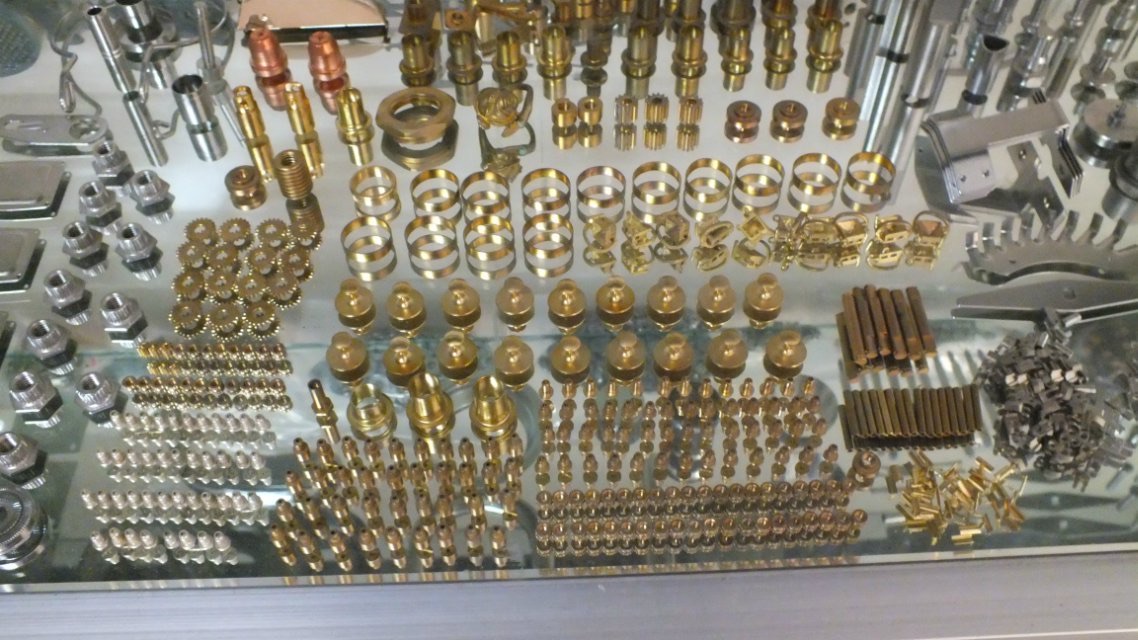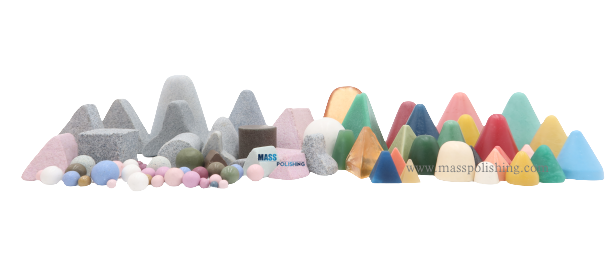

Mass finishing is a broad term that encompasses a variety of abrasive industrial processes. The purpose of these processes is to achieve one or more surface improvements on a large number of parts or components in a cost-effective manner. Some of the surface effects that can be achieved through mass finishing include deburring, cleaning, polishing, burnishing, brightening, and drying. These processes are not necessarily mutually exclusive, and it is common for several of these effects to be achieved through a single mass-finishing process.
Mass finishing revolves around two primary elements. The first is the media, which refers to a free or loose abrasive substance that is contained within a chamber or container. The media is energized to begin moving, which causes it to wear away at the surfaces of the components being processed. The second key element is compounds, which are added to the process to aid in burnishing, deburring, cleaning, cutting, descaling, and repressing corrosion. Compounds may be in the form of dry powders or liquids, depending on the specific mass-finishing process being used.
In summary, mass finishing is a versatile and cost-effective way to achieve surface improvements on a large number of parts or components. By utilizing abrasive media and compounds, various surface effects can be achieved through a single process.

Surface refinement is a crucial step in the manufacturing process of most parts and components. However, traditional methods such as surface finishing and manual deburring can be costly and labor-intensive. That's why many manufacturing firms employ mass finishing techniques, which offer economic benefits and streamline procedures that require significant part handling.
In addition, quality control standards are becoming increasingly stringent, making uniformity across parts and lots essential. Mass finishing processes can achieve this level of uniformity, which is difficult to replicate when parts are individually handled.
Furthermore, well-executed mass-finishing processes can greatly reduce the rates of part rejection and rework. Overall, mass finishing is a cost-effective and efficient way to improve the surface finish of manufactured parts while ensuring consistency and quality control.

Mass finishing serves multiple purposes in achieving a range of surface improvement effects. Let's delve deeper into some of these effects:
Firstly, cleaning is the primary function of mass finishing and forms the foundation for all finishing processes. Cleaning involves removing any unwanted residue from the part, such as oxidation or scale, cutting or stamping fluids, dust or particulates, or die lubes and corrosion inhibitors. While the cleaning process is primarily chemical, mechanical action provided by media and equipment is also crucial.
Deburring is another key effect of mass finishing, which involves using abrasive media to grind away machine lines, burrs, sharp edges, belting marks, slag, and establish radii.
Surface refinement is the process of reducing rough surface finishes to acceptable standards for painting, plating, polishing, and anodizing operations. These finishes are measured using a profilometer and represented in terms of RA, which indicates the average distance between the peaks and valleys of the surface of the parts.
Once the part has been cleaned, deburred, and surface-refined, it needs to be protected from oxidation and corrosion. This process is called inhibition.
Finally, all the above functions typically result in a wet part that must be dried to ensure optimum corrosion inhibition. Drying is accomplished using mass finishing equipment and ground corn cob, which is often intensified by heat.
In summary, mass finishing achieves several surface improvement effects, including cleaning, deburring, surface refinement, inhibition, and drying, through a combination of chemical and mechanical processes.
There are various types of equipment and techniques used in mass finishing, but two of the most commonly used methods are tumble finishing and vibratory finishing. These techniques employ cyclical action to create a grinding contact between the surfaces of the components being processed. Tumble finishing, also called barrel finishing, involves rotating a container or barrel filled with media and parts around a horizontal axis. On the other hand, vibratory finishing uses a vibratory tumbler or bowl filled with media and parts that are vibrated at high frequencies to achieve the desired surface finish. Both techniques have their own unique advantages and can be tailored to meet the specific needs of different industries and applications.
Let us take a brief look at both:
1) Tumble finishing is a highly effective mass-finishing process for small parts that require the smoothing out of rough surfaces. This is achieved by placing the parts in a barrel containing abrasive media, water, and a compounding agent. The barrel is then rotated to create friction, which quickly and efficiently deburrs the surfaces of the parts.
2) Vibratory finishing is ideal for cleaning, deburring, descaling, burnishing, and brightening small to medium-sized workpieces. This process involves placing the parts, media, and compounds into a vibratory bowl or tub. The vibration forces the parts to grind against each other and the media, resulting in the polishing and deburring of a mass of parts. Vibratory finishing is also used for cleaning, descaling, and surface preparation. The results achieved through vibratory finishing are typically impossible to achieve by hand.
When it comes to mass finishing techniques, vibratory finishing is often the preferred option due to its numerous advantages. For one, the process can be easily automated, which can lead to cost and time savings for businesses. Additionally, vibratory finishing is better suited for larger or delicate parts and can achieve tighter tolerances.
Furthermore, vibratory finishing usually results in a smoother finish with less surface wear, ultimately leading to increased durability and lifespan of the parts.
However, vibratory finishing systems are generally more complex and expensive to purchase, maintain, and operate compared to barrel systems. While barrel systems may take longer to finish tasks, they generate less wear on the abrasive media, thus reducing costs.
It's worth noting that the barrel tumbling process does have a drawback, in that the parts can tumble over one another, potentially causing surface indentations.

The mass-finishing process employs a wide range of media types, including ceramic, aluminum, synthetic, plastic, and more. However, the two media types that are commonly used are ceramic and plastic.
Ceramic media can be used for a variety of processes, from heavy grinding to fine polishing. It is a versatile media that is suitable for a wide range of applications.
Plastic media is typically used for mild surface finishing and is often used for softer, non-ferrous materials such as die castings. While other media types may be appropriate for certain applications, ceramic and plastic media are the most commonly used due to their effectiveness and versatility.
To delve further into mass-finishing media, they can be classified based on composition, shape, and size.
The composition of the media is crucial in determining its purpose, ranging from heavy grinding to fine finishing. Variables such as bulk density and abrasive material content are important in selecting the appropriate composition for a particular application.
Media shape is another important factor that can affect the finishing results. Most mass-finishing media is pre-formed, meaning it's manufactured into specific shapes for particular finishing applications. However, random-shaped media is also available. The shape of the media is essential to the success of the finishing process. Even if media has the same size and composition, different shapes can produce vastly different results.
Here are five of the most common shapes employed in mass-finishing applications:
> Triangle
> Cylinder
> Ellipse
> Pyramid
> Tri-star
The size of your mass-finishing media is a crucial consideration for your application. If the media is too large, it may not be able to reach every surface of your components during processing. On the other hand, if the media size is too small, it can potentially become lodged in your processed parts and cause issues. Therefore, selecting the appropriate media size is essential for achieving the desired results.
Mass finishing has become an essential process for manufacturers to achieve the desired finishing results, replacing the outdated practice of hand finishing. The benefits of mass finishing in terms of speed, quality, and consistency have made it a preferred choice for many. As a result, it is imperative for manufacturers, regardless of their size, to invest in high-quality mass-finishing equipment to compete in the global market. Why not choose mass finishing today? Welcome to contact us for further information!